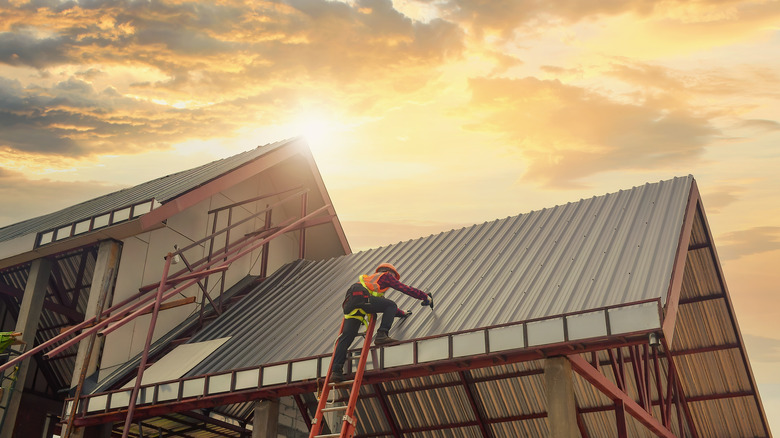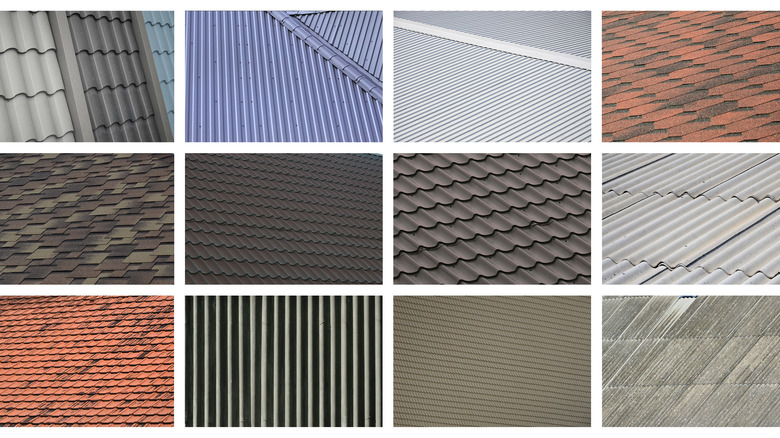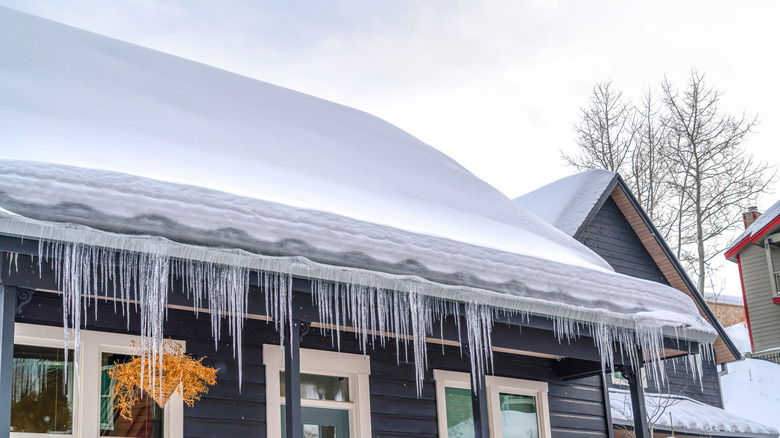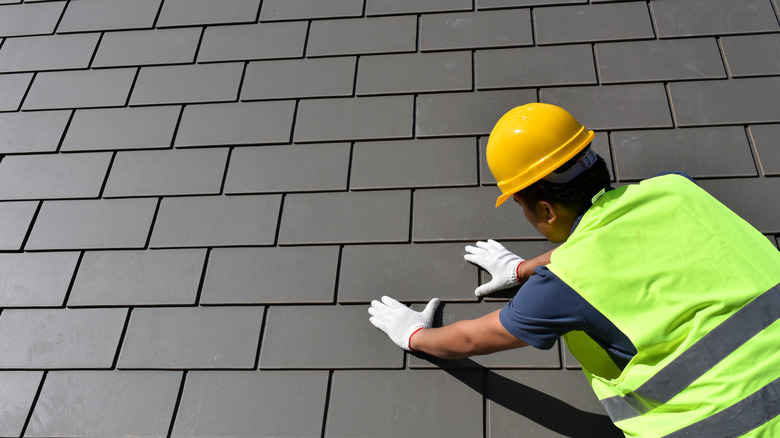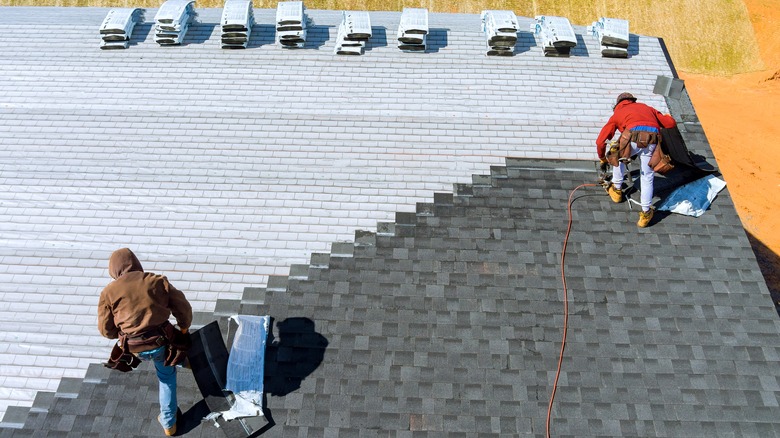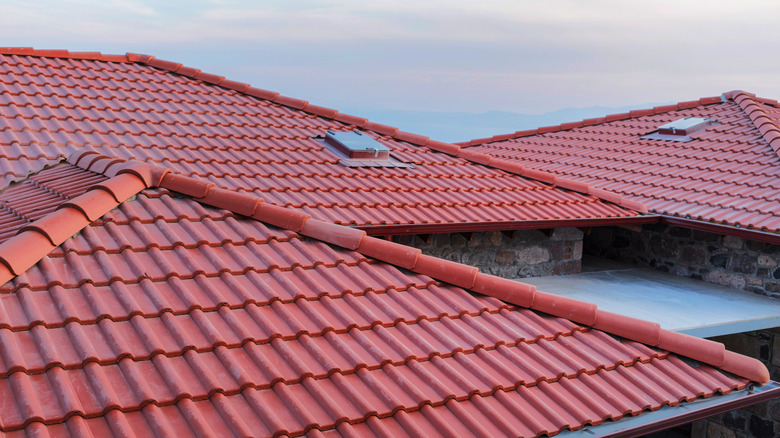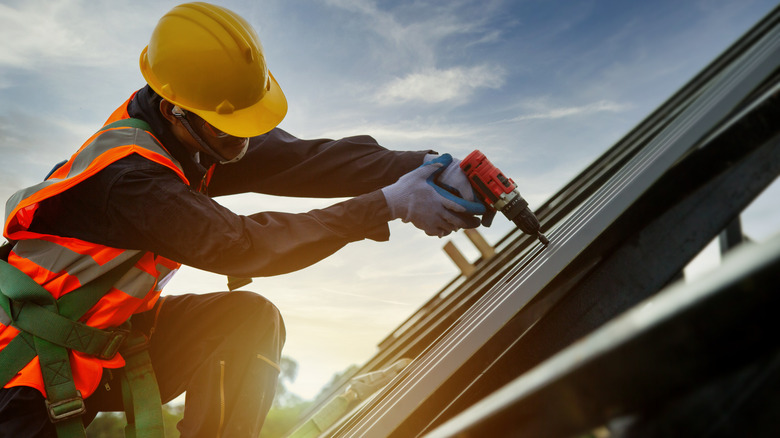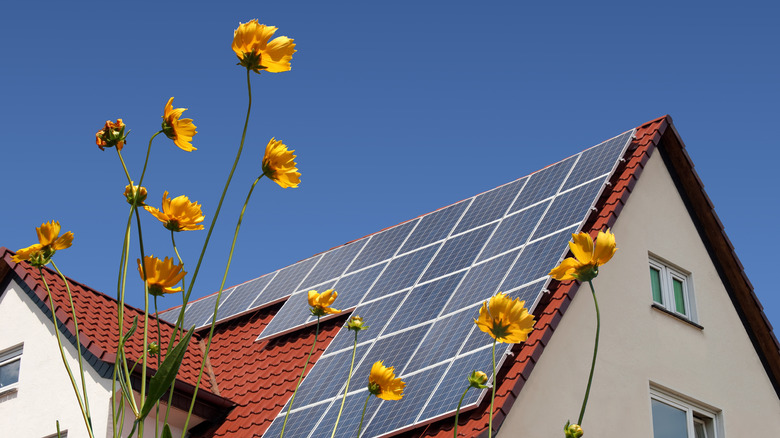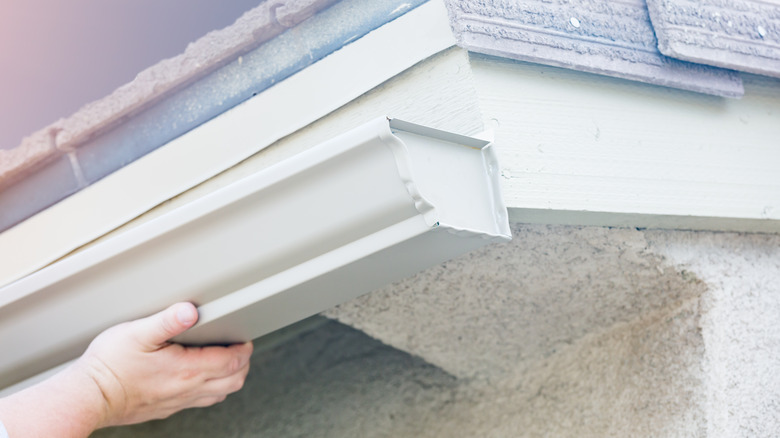How To Pick The Best Roof For Your Home
Is your roof leaking, sagging, missing shingles, or otherwise damaged beyond repair? If so, you're probably getting ready to start the process of getting a new roof installed. This can be a difficult and time-consuming decision. There are several variables to consider, including the pros and cons of different materials and their associated costs, along with several other factors that will impact which roof is the best choice for your home.
Fortunately, once you work through all of these considerations and get the new roof installed, it will come along with several benefits. It can increase the value of your home, decrease energy loss, and improve the energy efficiency of your home. Plus, a new roof will help your home look nicer and improve its curb appeal. Read on to discover what you should do to select the best choice for your home so you can begin enjoying all of these benefits and everything else that comes along with tackling this home improvement project.
Common Roofing Materials
One of the biggest decisions you'll need to make when getting a new roof relates to the type of material you want to use for the project. With several roofing materials, each with its distinct own pros and cons, this isn't always an easy decision to make. Let's start by going through a brief overview of each material, its characteristics, and a few benefits and drawbacks that can help you decide whether it may be the optimal choice for your home.
If you look around your neighborhood, you're likely to see several homes with asphalt shingle roofs. Compared to other materials, asphalt is affordable. Plus, within the overall category of asphalt shingles, there are different types (3-tab, dimensional, and luxury) available to match different budgets. Another benefit of this type of shingles is that they can be replaced easily if just one or a few are damaged.
Metal roofs are also fairly common, depending on where you live. Standing seam metal roofs feature interlocking panels that give the roof some texture, while also ensuring that each piece of metal can appropriately expand or contract. The metal is highly durable, meaning that it may last for 50 years without issue.
Cedar shake roofs are made using natural cedar wood. These are often very attractive roofs, but there are drawbacks. With exposure to the elements and aging, the shingles may rot, crack, or become otherwise damaged. And, they don't come with manufacturer warranties, unlike some other materials.
A slate roof can really upgrade the look of your home plus it can last for decades. However, this beauty and longevity will come at a premium; slate is more expensive than nearly any other material.
Clay tiles are another choice. Clay is known for being durable and easy to maintain. With the various colors and styles on the market, a clay tile roof can also enhance the appearance of a home. However, clay tiles are very heavy and may not be suitable for use on all homes. They are also more difficult to install than some other materials.
Consider your location
Where you live will also play a huge role in deciding which roofing material is best for your home. Each material reacts differently to hot or cold temperatures, high wind conditions, humidity, and other factors. Understanding these different reactions and combining that information with weather and climate patterns in your area can help you avoid picking a material that won't do well.
For example, if you live in an area where it gets very cold, a wood shingle roof may be the best for your home. The shingles offer greater insulation than some other materials. They are also thick and heavy, which makes them able to resist strong winds and snow. Conversely, a wood shingle roof would not be a good choice for a humid climate because increased moisture can warp the wood or make it easier for mold to grow.
If you do live in an area with excessive heat and humidity, then clay tiles may be the right choice for you. These tiles reflect heat, helping to keep homes cooler. If you live in a region that is prone to experiencing hurricanes or other severe weather events, durable clay tiles are also able to withstand high winds.
Asphalt shingles typically do well in a variety of climate types. However, if you live in an area with high winds, you may want to consider a different choice or at least opt for a heavy-duty shingle to protect against storm damage. Slate roofs are also suitable for use in both hot and cold climates. The material withstands extreme hot and cold temperatures, high humidity levels, and more.
Keep your budget in mind
When it comes to choosing a new roof, you will also have to keep your budget in mind. The cost of these materials varies, and some are considerably more expensive than others. Even if you think one type of roof will be the ideal fit for your home and the area where you live, be sure to find out just how much it will cost before you sign on the dotted line with a contractor.
In addition to the variations between the different types of materials, the size of your home will also play an important role in determining the final cost of the job. Obviously, a large surface is going to cost more to cover than a smaller one. Roofing materials are priced by the square foot and often sold in bundles called "squares" (100 square feet of shingles).
As shared earlier, asphalt shingles are often the most cost-effective option. More basic versions typically cost about $90 per square, though you should expect to pay more for higher-end options. Composite tiles run about $400 per square, with wood shingles being similarly priced at about $350 to $500 per square. A metal roof will also be comparably priced as most squares cost between $275 and $400. For clay tiles, there can be a larger range, as some varieties may only cost about $300 per square, while others can be closer to $1,000 per square. Slate tends to be the most expensive choice, with each square costing between $690 and $1,250.
Compare expected lifespans
Keeping your budget in mind is very important. However, it is also important to consider what you'll be getting for your money. Of course, there are a variety of variables that can impact how long a roof will last, but some materials are known to have a longer lifespan than others. For example, while asphalt shingles are the most economical choice, they don't typically last as long as some other materials. The average lifespan of standard asphalt shingles is only 20 years. If you choose architectural asphalt shingles, they should last a bit longer, but most still cap out at about 30 years.
Wood shingles will be more expensive than their asphalt alternatives, but they also offer a longer lifespan of approximately 30 years. However, depending on the climate where you live and how well you maintain your home, wood shingles can last considerably longer. Similarly, metal roofs also have a longer lifespan than asphalt, with most lasting at least 40, if not closer to 80, years. If you're looking for a material that will outperform any of these options and last for your entire lifetime, consider slate, clay, or concrete tiles. These all offer a 100-year lifespan.
When you take the extended lifespans of some more expensive materials into account, you can see how over time the roofs may end up paying for themselves. However, the higher initial cost can be prohibitive for many homeowners. If you do have the money to invest upfront, it may be worth considering, though.
Choose the best roofing company
Once you have an idea of which materials you want to use for your roof, it is time to search for the best roofing company to complete the job for you. Waiting until you've compared the different shingle options is a good idea because some contractors may specialize in different materials. This will allow you to focus your search on the contractors that will be able to help you accomplish your project goals.
As with choosing any other professional contractor for work around your home, there are several things to look for in a roofing company. You want to choose a company that will offer exceptional customer service and provide top-quality work. To help you achieve these two goals, it's a good idea to consult online reviews and ask for references before making a decision. Don't let anyone give you a hard sell about why they are the best; do your homework instead of just taking their word for it.
Many states require contractors to be licensed. However, even if your state does not have this requirement, it is still an important thing to look for when choosing a roofer. A licensed contractor has demonstrated their knowledge and skills and should be better able to handle the demands of installing your new roof. Similarly, you should only consider insured roofers. This will protect you from being held liable in the event your home is damaged or one of the workers is injured while working on your property.
Decide on a roofing color
Depending on the material you choose, there may be several different shingle colors available. Asphalt shingles and clay tiles are available in a range of colors. Even slate, wood, and metal are available with different color variations. Taking some time to consider the best color is an important skip you don't want to skip.
The color you choose should complement the overall look of your home and yard. However, exactly how you choose to do that may vary. For example, if you're looking for something that will draw more attention to your home, go with a bolder or more vibrant color. Lighter colors or those that more closely match the colors of your siding and shutters may be a better choice if you desire something a little more subtle. Considering the climate in your area can also help when choosing a roofing color. If it gets very hot in the summers where you live, a lighter color that will reflect some heat may help your home stay a bit cooler. Similarly, if you live in a cold climate, choosing darker shingles that will absorb some of the heat from the sun may be the right choice.
Consult your HOA
If your neighborhood has a homeowners' association, don't make any final decisions or sign any contracts for a new roof before checking with them. Homeowners' associations can have very strict (and sometimes, very odd) rules and regulations regarding the exterior appearance of a home. A new roof can alter the way a home looks from the curb. Because of this, some HOAs may restrict the shingle materials residents can use or even the colors that are allowable.
Reach out to your HOA to see what the approval process involves. You'll likely need to submit a proposal for the project, including the roofing material and color you've selected. It will be unfortunate if your proposal gets denied, and you have to go back to the drawing board to choose a different material or decide on a new shingle color. However, this will be a minor inconvenience compared to getting a citation or fine from your HOA after everything is installed or even being told that you have to remove your brand-new shingles.
Pay attention to the warranties
Regardless of which material you choose, a new roof is a big purchase. Paying attention to the available warranties before making a final decision can help protect you against damages or defects in either the materials or the craftsmanship of the company that completes the installation. When it comes to purchasing a new roof, there are two different types of warranties to look for.
The first is a manufacturer's warranty. Most shingle materials come with a warranty that protects against defective materials or manufacturing practices. The length of this coverage will vary based on the type of roof you choose. On average, asphalt shingles are backed by a 25- or 30-year warranty, though some manufacturers may offer extended options as well. Most clay tile manufacturers offer a 50-year warranty for their products. While slate and wood roofs are known to last for a long time because they are natural materials, they typically won't be covered by a manufacturer's warranty.
Finding a good manufacturer's warranty is important. However, it will only cover the materials themselves, not any issues that result from poor installation. For this reason, you should also look for contractors that back their work with an additional warranty. Ask for detailed information about the type of coverage they offer, what is covered, and what is not covered. To further protect yourself against a potential future claim, ask for the answers to these questions in writing.
Consider adding solar panels — or even using solar shingles
If you're going to be getting a new roof, now may be the perfect time to also have solar panels installed. According to The Department of Energy, some solar installers and roofing contractors have formed partnerships that allow them to offer a discount to consumers who choose to have both products completed at the same time. On average, most solar panels last about the same amount of time as an asphalt roof. By replacing them at the same time, you're saving yourself the headache of having to have the panels removed — and then reinstalled — when you need a new roof in the future. By adding solar panels, you can increase your home's value, save money on utility costs, and do your part to contribute to lower energy usage across the globe.
Solar shingles are another option to consider if you're thinking about getting a new roof and solar panels at the same time. This special shingle type will do the job of both roofing shingles and solar panels at the same time. Like solar panels, the shingles work to absorb sunlight and turn it into electricity to power the devices in your home. However, as you could probably guess, these specialized shingles aren't cheap. You should expect to spend at least $15,000 for a new solar shingle roof. However, you could easily spend more ($70,000 or more) depending on the size of your home and the manufacturer you choose.
Decide if you want to get new gutters too
Getting new gutters when you get your roof replaced is a logical choice for many homeowners. It can make sense to tackle both of these projects at the same time since the roof and gutters are so close to one another and almost seem interconnected. However, is it the right choice for you?
If your gutters are leaking or damaged, then it certainly makes sense to get them replaced when you get a new roof. After all, you don't want to spend all that money on a new roof only to deal with leaks around your property caused by the gutters. Another reason you may want to consider completing both of these projects at the same time is due to finances. While adding on the gutters will make the total cost of the job more expensive, it could be easier for you to finance both projects at the same time if you intend to take out a home equity loan to pay for the work
However, replacing the gutters at the same time as the roof isn't always the right decision. If there is nothing wrong with them, you do not have to replace them. They can remain in place when the old roof is removed and a new one is put in its place. Ultimately, the choice is up to you. Don't let a roofing contractor push you into replacing your gutters if it isn't necessary or simply isn't in your budget right now.
